This is definitely a bug. This bug affects Visual Graph functionality only. In the SPARQL results view, everything is fine.
The problem seems to be complex. There are two factors:
Let us consider the following examples.
Before each example, clear your repository and delete prefixes created in Setup > Namespaces.
Case 1
@prefix : <http://www.example.org/~joe/contact.rdf#> .
@prefix foaf: <http://xmlns.com/foaf/0.1/> .
@prefix rdf: <http://www.w3.org/1999/02/22-rdf-syntax-ns#> .
:joesmith a foaf:Person ;
foaf:givenname "Joe" ;
foaf:family_name "Smith" ;
foaf:homepage <http://www.example.org/~joe/> ;
foaf:mbox <mailto:joe.smith@example.org> .
As you have pointed out, <http://www.example.org/~joe/> is not shown.
Case 2
@prefix : <http://www.example.org/~joe/contact.rdf#> .
@prefix foo: <http://xmlns.com/foaf/0.1/> .
@prefix rdf: <http://www.w3.org/1999/02/22-rdf-syntax-ns#> .
:joesmith a foo:Person ;
foo:givenname "Joe" ;
foo:family_name "Smith" ;
foo:homepage <http://www.example.org/~joe/> ;
foo:mbox <mailto:joe.smith@example.org> .
In this case, <http://www.example.org/~joe/> is not shown.
Case 3
@prefix : <http://www.example.org/~joe/contact.rdf#> .
@prefix foaf: <http://xmlns.com/foaf/01/> .
@prefix rdf: <http://www.w3.org/1999/02/22-rdf-syntax-ns#> .
:joesmith a foaf:Person ;
foaf:givenname "Joe" ;
foaf:family_name "Smith" ;
foaf:homepage <http://www.example.org/~joe/> ;
foaf:mbox <mailto:joe.smith@example.org> .
In this case, <http://www.example.org/~joe/> is shown.
Case 4
@prefix : <http://www.example.org/~joe/contact.rdf#> .
@prefix foaf: <http://xmln.com/foaf/0.1/> .
@prefix rdf: <http://www.w3.org/1999/02/22-rdf-syntax-ns#> .
:joesmith a foaf:Person ;
foaf:givenname "Joe" ;
foaf:family_name "Smith" ;
foaf:homepage <http://www.example.org/~joe/> ;
foaf:mbox <mailto:joe.smith@example.org> .
In this case, <http://www.example.org/~joe/> is shown.
I'll try to contact their support team directly by sending email.
UPDATE 1
They say there are four kinds of RDF terms:
- URIs
- Literals
- Blank nodes
- URIs considered by their team as "not real".
From GraphDB query logs, one can ascertain what URIs are of the fourth kind.
BIND (strstarts(str(?p), "http://purl.org/dc/terms/") ||
strstarts(str(?p), "http://dbpedia.org/ontology/subsidiary") AS ?isMeta)
FILTER(!strstarts(str(?p), "http://www.w3.org/2002/07/owl#")
&& !strstarts(str(?p), "http://www.w3.org/1999/02/22-rdf-syntax-ns#")
&& !strstarts(str(?p), "http://www.w3.org/2000/01/rdf-schema#")
&& !strstarts(str(?p), "http://www.openrdf.org/schema/sesame#")
&& !strstarts(str(?p), "http://www.ontologydesignpatterns.org/ont/dul/DUL.owl")
&& !strstarts(str(?p), "http://www.w3.org/ns/prov")
&& !strstarts(str(?p), "http://dbpedia.org/ontology/wikiPage")
&& !strstarts(str(?p), "http://dbpedia.org/property/wikiPage")
&& !strstarts(str(?p), "http://www.omg.org/spec/")
&& !strstarts(str(?p), "http://www.wikidata.org/entity/")
&& !strstarts(str(?p), "http://factforge.net/")
&& ?p != <http://dbpedia.org/property/logo>;
&& ?p != <http://dbpedia.org/property/hasPhotoCollection>;
&& ?p != <http://dbpedia.org/property/website>;
&& ?p != <http://dbpedia.org/property/homepage>;
&& ?p != <http://dbpedia.org/ontology/thumbnail>;
&& ?p != <http://xmlns.com/foaf/0.1/depiction>;
&& ?p != <http://xmlns.com/foaf/0.1/homepage>;
)
UPDATE 2
In GraphDB 8.3, it was fixed in some way:
GDB-2076 - Visual graph: consistent handling of foaf/dbpedia
predicates that point to IRIs but are treated as literals
